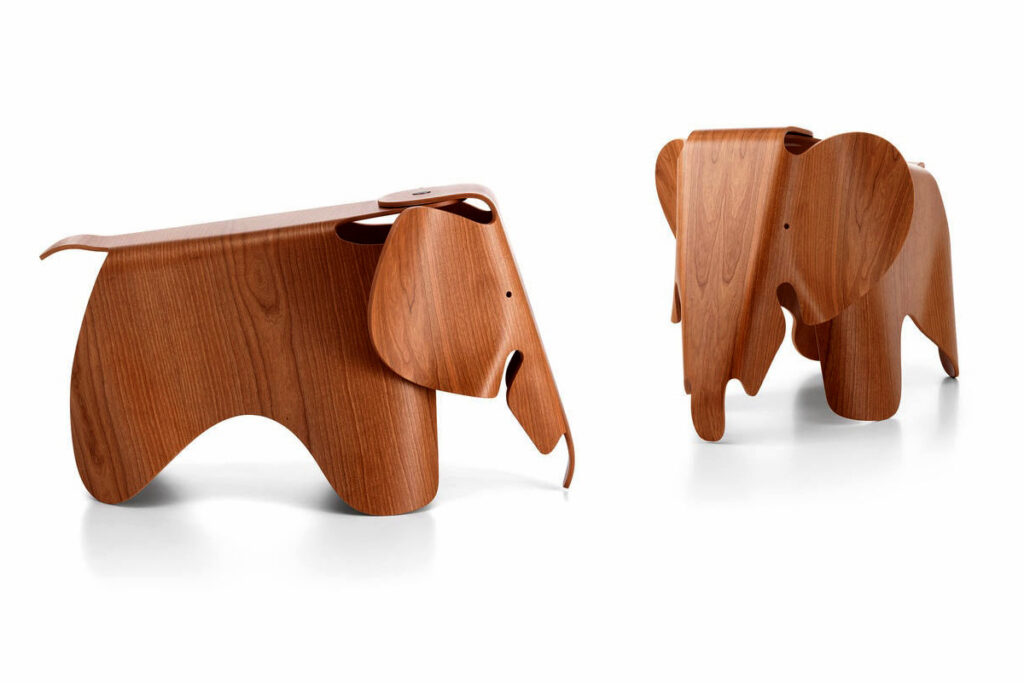Charles & Ray Eames: from the small to the big scale.
Although Ray & Charles Eames were born at the beginning of the 20th century, they continue to be the modernity, innovation, industrialization and minimalism benchmarks. They coined «good»,«very good» and «Eames».
Ray Kaiser began her education in New York and continued her painting studies at the Hans Hofmann School of Fine Art, exposing her work at the first exhibition of American abstract artists.
She went later to the Michigan’s Cranbook Academy of Art to study architecture and design.
Charles Eames studied architecture at Washington University in St. Louis, although he dropped out two years later to work in this discipline.
He moved with his family to Michigan adviced by Eliel Saarinen to continue his studies at Cranbook, becoming a teacher, directing the industrial department and participating with Eero Saarinen in the design of the «Organic Design» award trophy, the «Eames-Saarinen Kleinhans Chair» and the «Eames-Saarinen Organic Chair».
Charles & Ray Eames began their common life in 1941 as a couple, after meeting at the Cranbook, residing in Los Angeles for the rest of their lives. Charles died the 21th August of 1978 and Ray exactly 10 years later.
Eames LCW
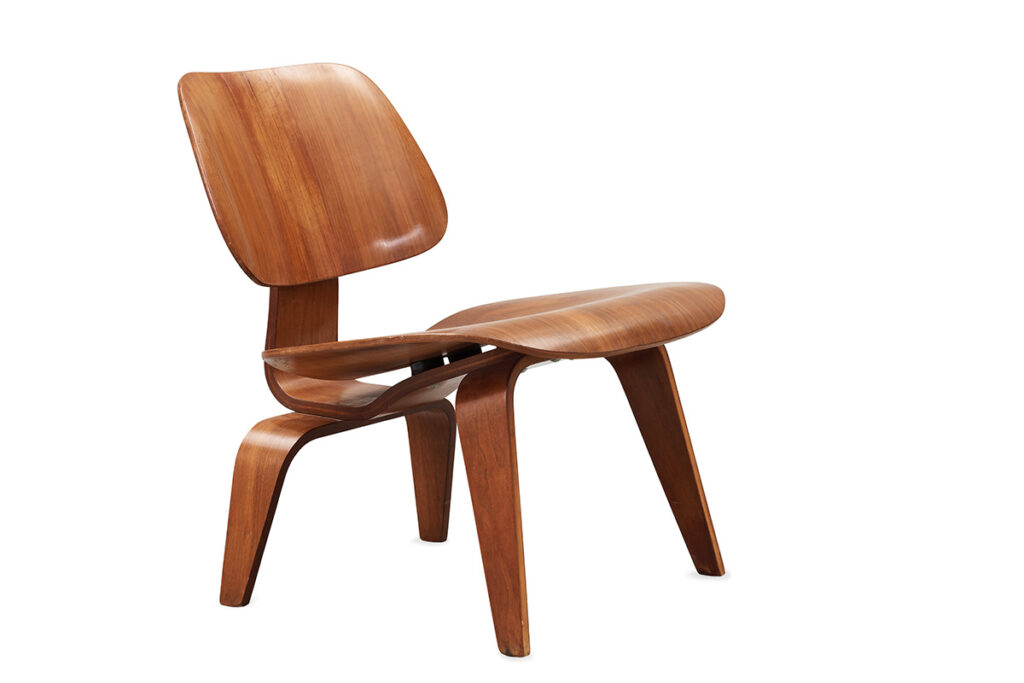
In 1945 they created the «Eames Lounge Chair Wood», where their innovative technique of modeling wood is demonstrated in a chair as small as iconic.
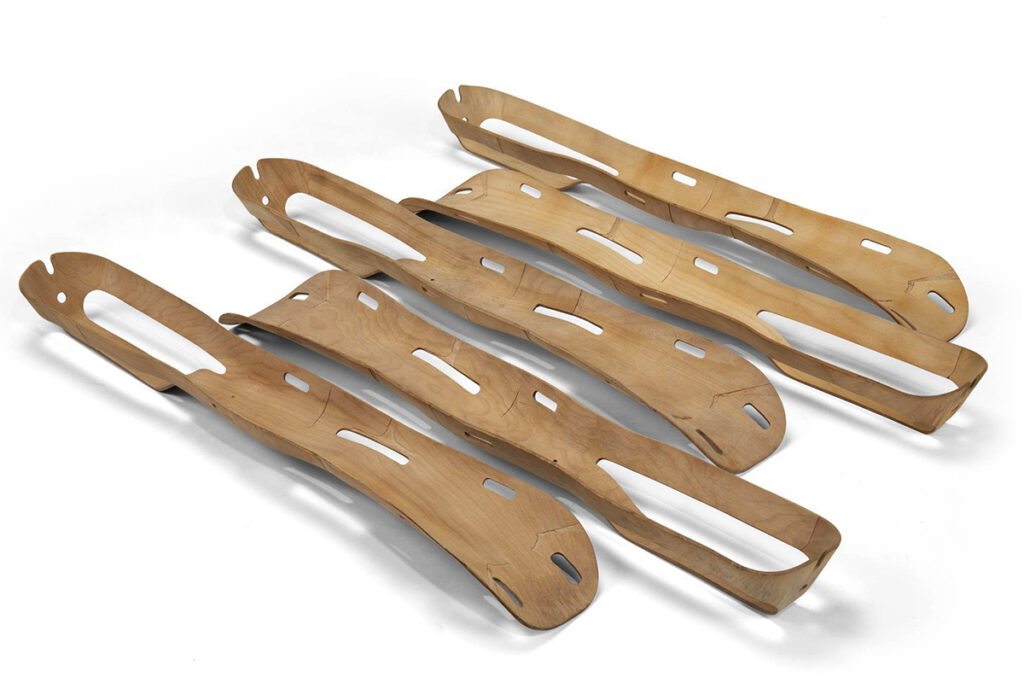
Their experience with three-dimensional modeling of plywood allowed the design and use of this material for leg splints for the US Army.
La Chaise
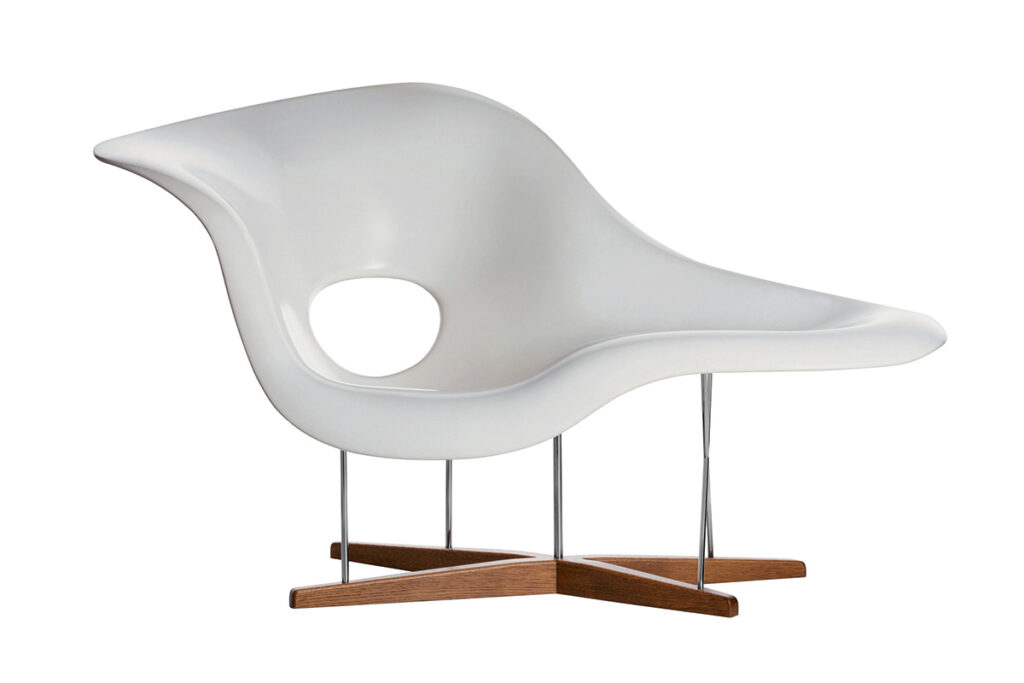
«La Chaise» was presented in the 1948 MoMA competition, a «surprising, attractive and inventive» seat, whose lines are understood when you see the «Floating Figure» sculpture and which is a symbol of organic design. The plastic and rubber-based compound they used was the result of new technologies and Second World War .
Eames House
On a hill overlooking the Pacific Ocean, the Eames built their home in 1949: The «Eames House». A design initially projected by Charles Eames and Eero Saarinen and which underwent modifications by Charles & Ray during its construction.
The «Eames House» responded the program for the industrialization of housing «Case Study House». The result was not what the promoters waited, they did not see what modularity, easy assembly and new materials would mean for architecture.
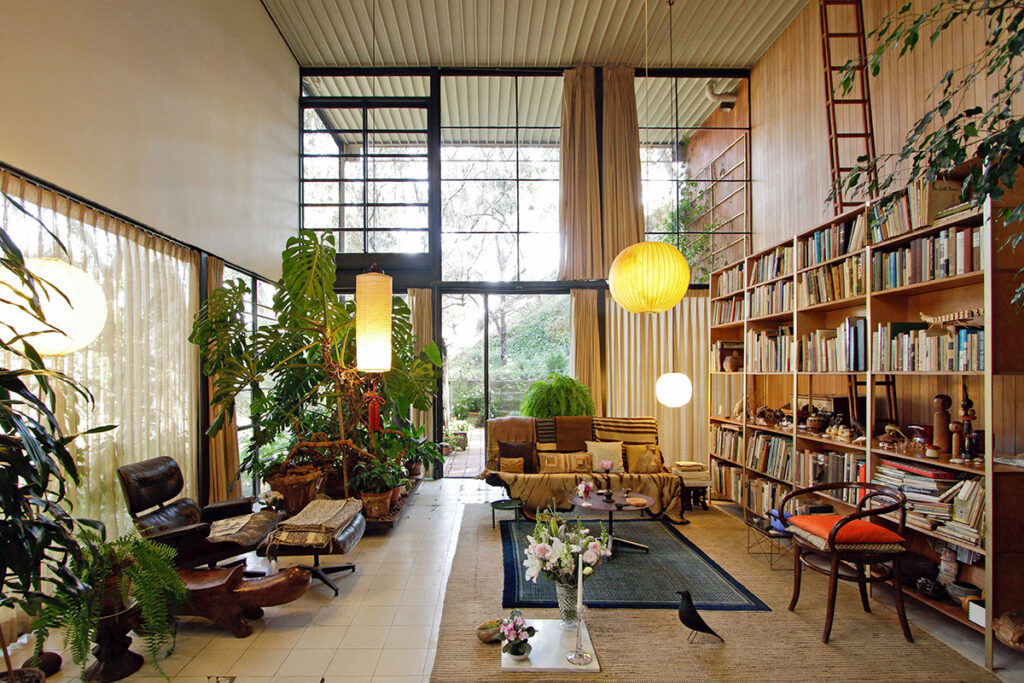
Charles got rid of the postulates that guided most of the architects. His house had to answer his needs: a place to shelter and a space to work.
The Eames developed two adjoining double-height buildings: one residential and the other studio-workshop; adding the flexibility factor and allowing the spaces (usually called living room, bedroom, dining room…), to become rooms adaptable to the needs that arise. Proof of this is that today the Eames House is the headquarters of the «Eames Foundation».
A house that is container and content. Its main steel frame and composite structures, plus a small retaining wall, were installed in just 90 hours.
It was assembled entirely with prefabricated materials: steel, glass, asbestos and cement panels. In this building, the structure stands out through the textures and colors of the materials.
Eames Plastic Armchair & Side Chair
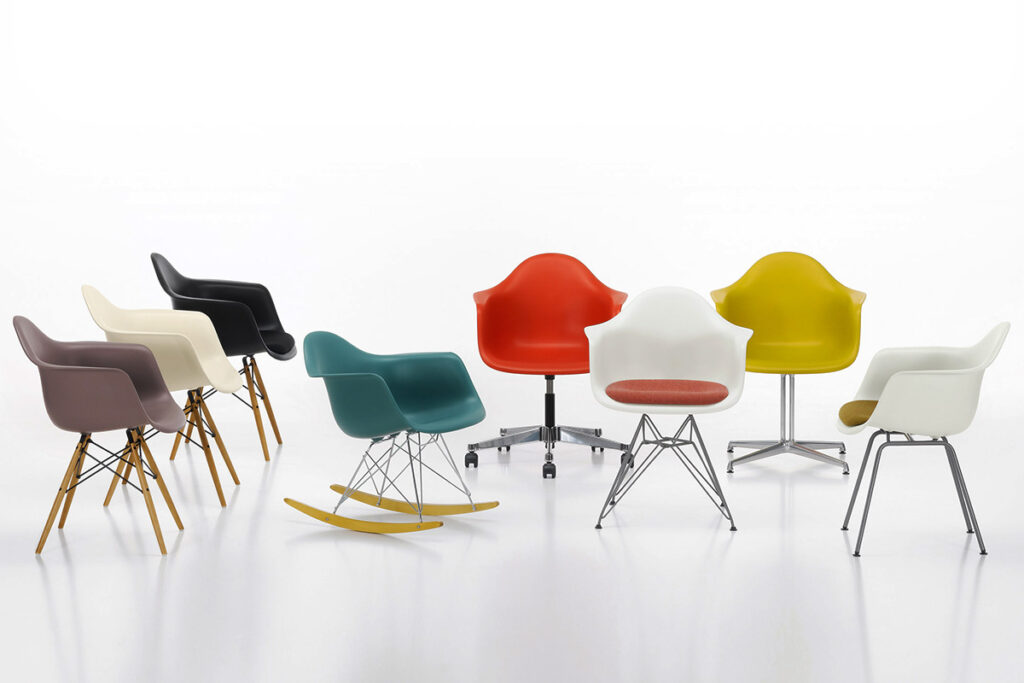
The first industrially produced plastic chairs in history appeared in 1950. Presented in 1948 in the «Low-Cost Furniture design» competition organized by MoMA, the «Plastic Armchair» and «Plastic Side Chair» answered one of the premises of the Eames :
«To achieve more of the best for more people and for less»
Their research and innovation led them to use fiberglass reinforced polyester resin, molding the shell to fit the human body.

Vitra currently uses the plastic for the «Eames Plastic Chair» and reserves the original composition for the «Eames Fiberglass Chair».
For the shells, available in a wide range of colors, the designers presented a large variety of bases, such as the «Eiffel Tower» structure, developed with highly stable steel wires. The «Eames Eiffel» were born.
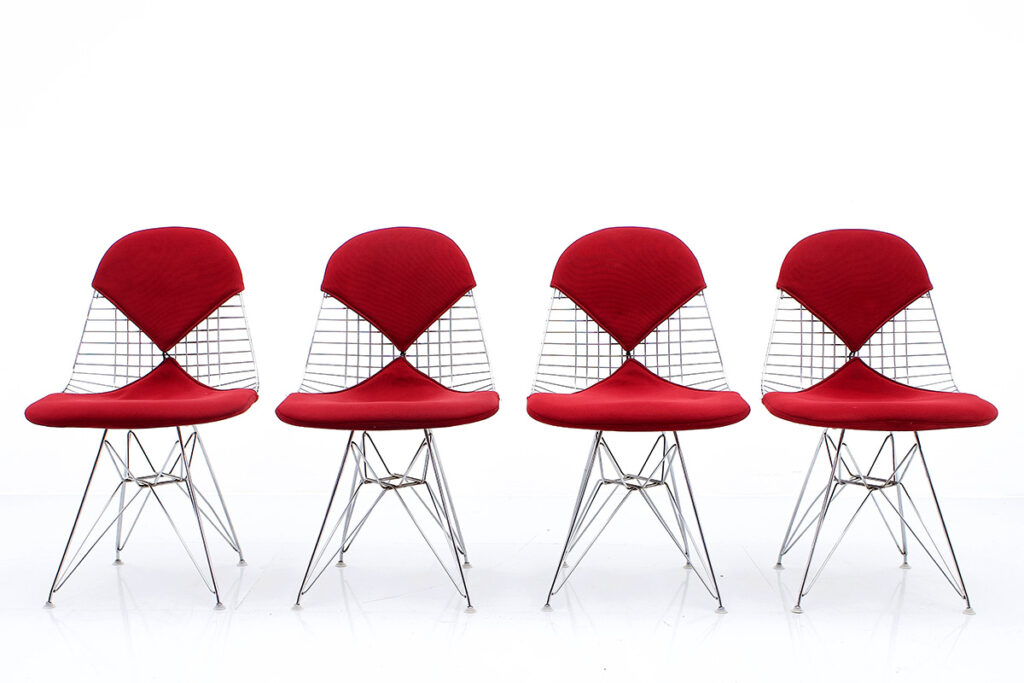
Charles & Ray established a nomenclature for the virtually endless options that can be achieved by combining shells and bases. For example, in the Eames DSW the «D» stands for «dining height», the «S» for «side chair» and the «W» for «wood base». In the Eames LAR, the height «L» corresponds to «lounge», the «A» to «armchair» and the «R» to «rod base»… and so on in endless possibilities.
Eames Lounge Chair & Ottoman
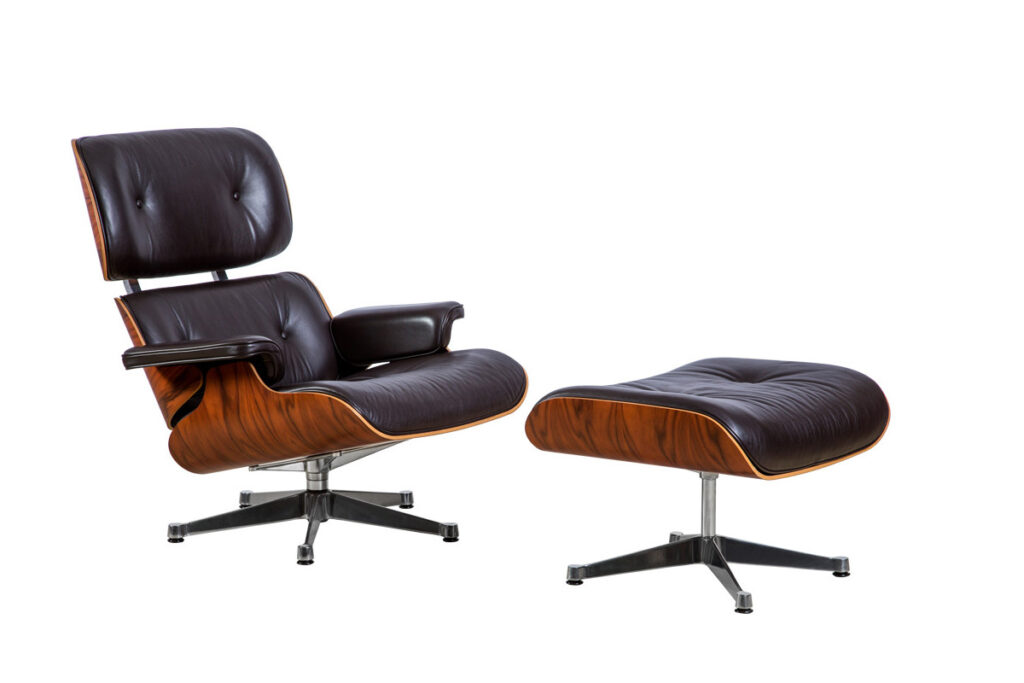
The couple of architects and designers conceived and created another design icon in 1956, the «Lounge Chair & Ottoman», marketed on large scale by the manufacturer Herman Miller and currently by Vitra for Europe.
It is not just a simple armchair and footstool, the Eames designed a comfortable and timeless piece of art, using only sustainable, recycled or recyclable materials.
The plywood and molded shell, the removable leather upholstery, elegant and long-lasting. A manufacturing process that has remained unchanged over time, a symbol inspired by a Baseball glove and an English club chair, exhibited at MoMA in New York and the Art Institute of Chicago.
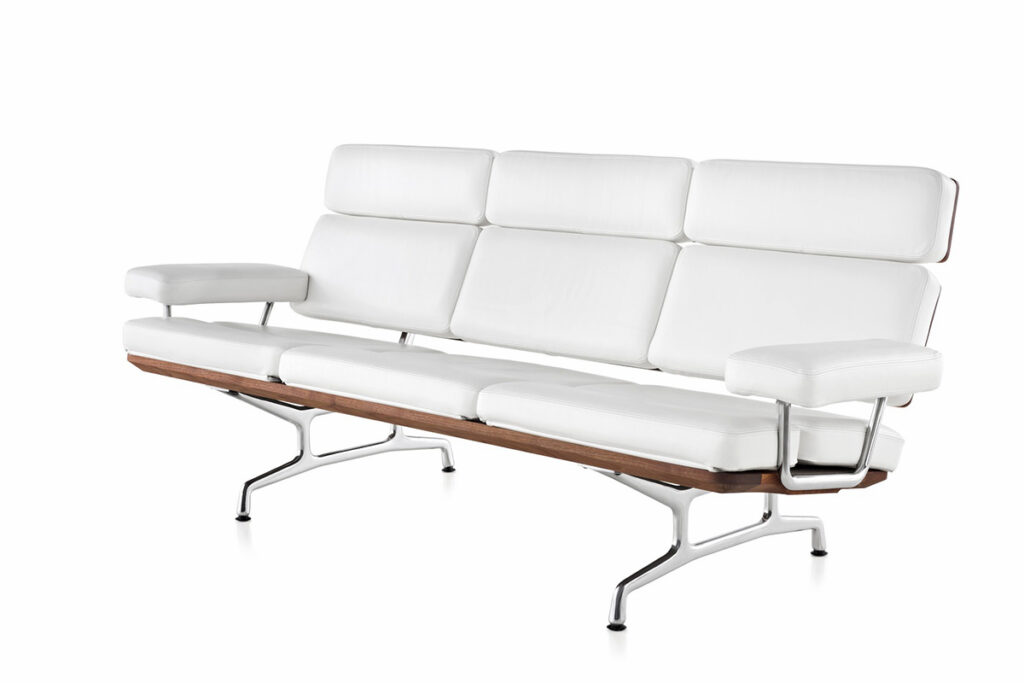
Manufactured since 1984 by Herman Miller, the «Eames Sofa» is the posthumous piece of Charles Eames. It was designed by the couple as a complement to the «Soft Pad Group», chairs conceived in 1969 and edited by Vitra.
Eames Soft Pad Group & Aluminium Group
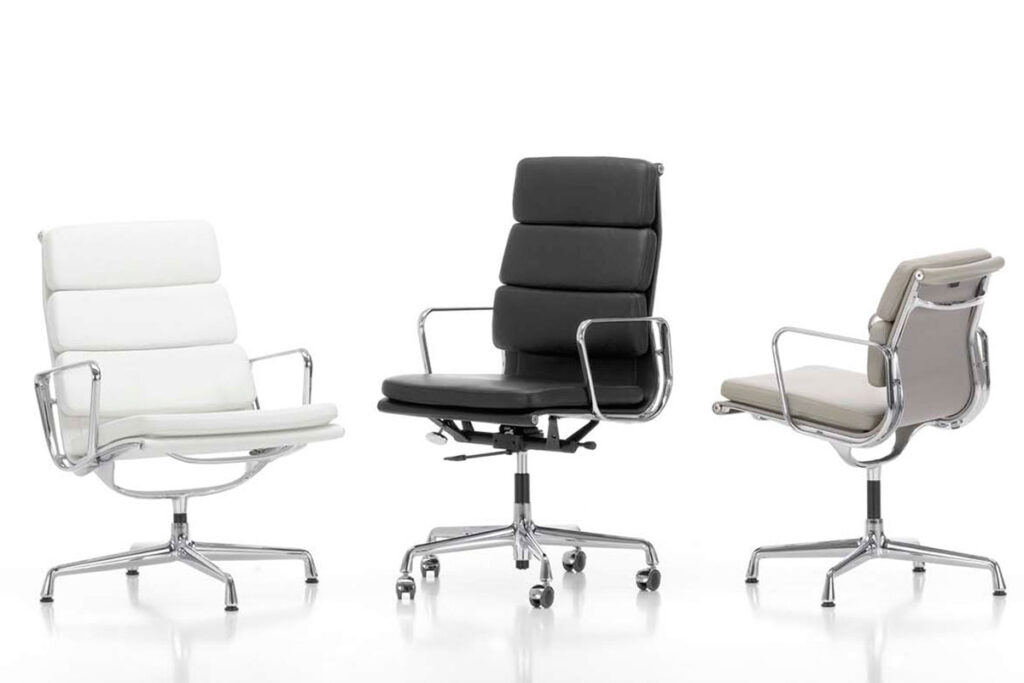
To understand this group of seats, we must refer to the «Aluminum Chairs», chairs that were created for the Herman Miller house, who could not find quality outdoor furniture. And there were the Eames, giving the American manufacturer an answer.
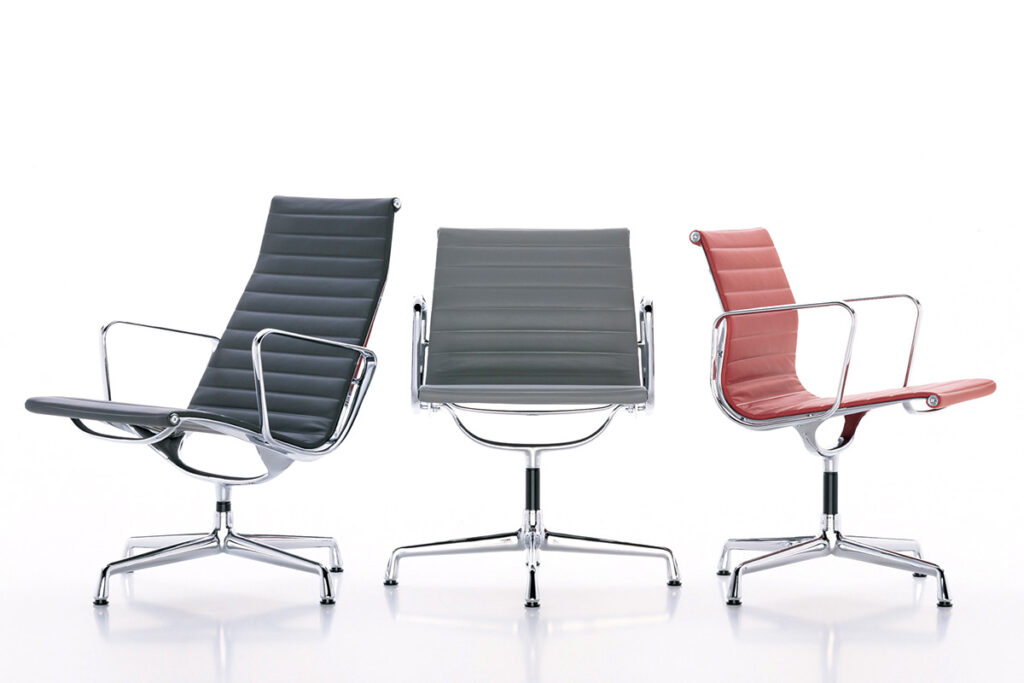
Although the silhouette matches, what differentiates the «Soft Pad Group» from the «Aluminum Group» is the padding, soft cushions that provide comfort and maintain the refined and elegant design of the aluminum profiles that support them.
To the pure lines, the structure and the soft leather that upholsters the cushions, the Eameses added walnut or teak when conceiving the «Eames Sofa».
Eames Desk Unit, Hang it all & Elephant
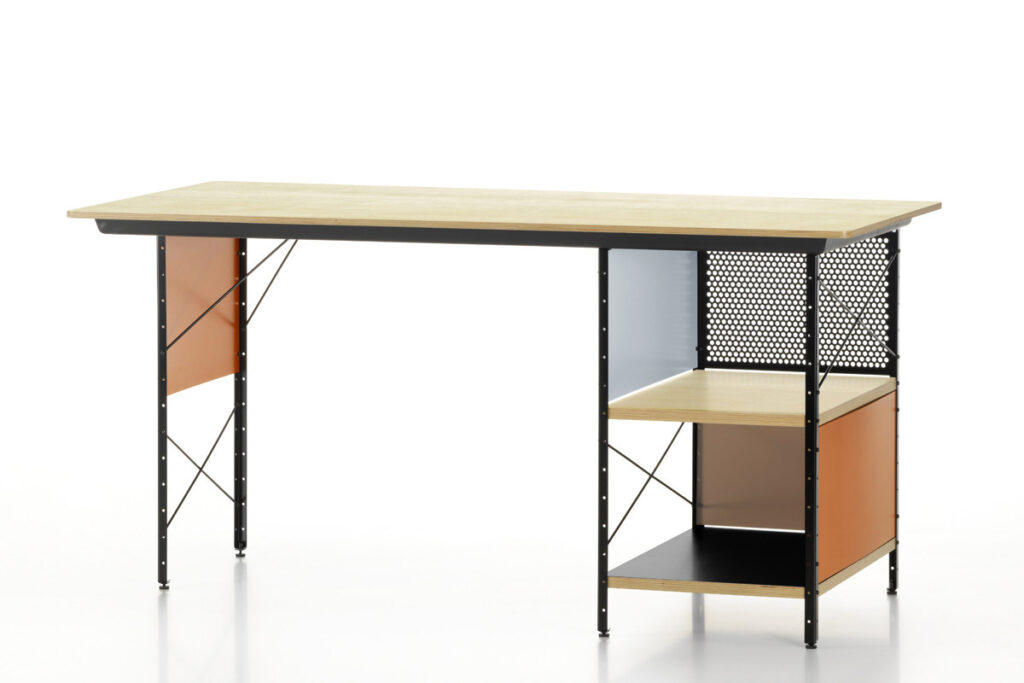
All Ray & Charles Eames designs: buildings like the «Max De Pree House», furniture like the «Desk Unit» or «Hang it all», toys like the «Elephant»; look for functionality, respond to a need, look for comfort, because they adapt to the human anatomy, and the material as a detail, since for them:
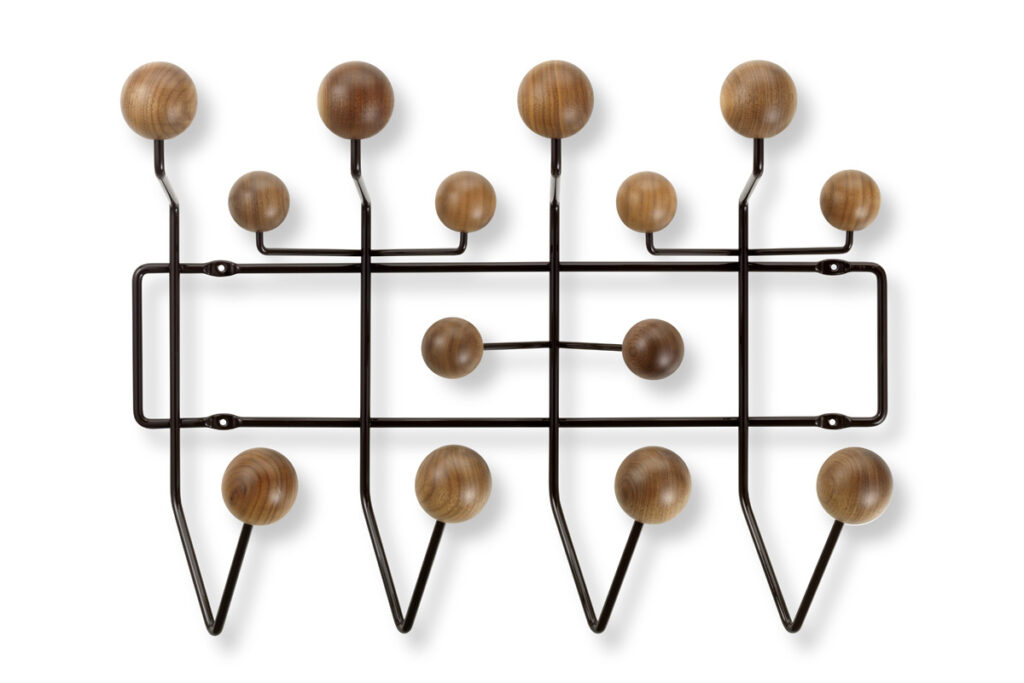
«The details are not details in themselves, they constitute the product»
